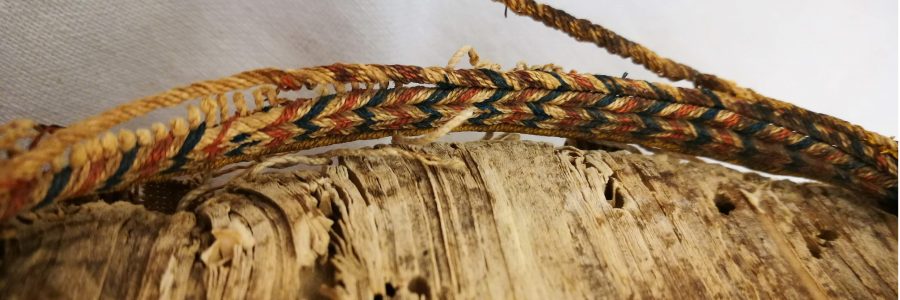
The Polonsky Foundation Greek Manuscripts Project: The conservators’ challenge – Part 1
The Polonsky Foundation Greek Manuscripts Project has been a great support in encouraging continued professional development within the project. In this blog post we will introduce an element of that development which focuses on three unstable bound manuscripts. They are from Cambridge University Library and in their current state they cannot be safely consulted or imaged. We aim to stabilise these manuscripts for digitisation and make them available for readers once more. This is no simple task; they are each estimated to require over two hundred hours of complex conservation treatment.

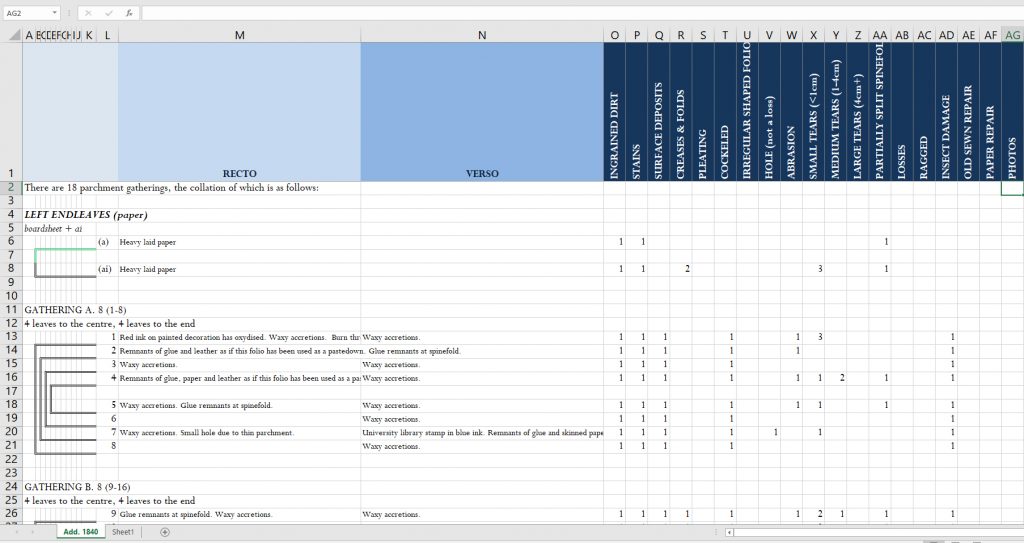
The three manuscripts were selected based on their state and their contents using the data from conservation’s initial survey and with help from our wonderful cataloguers. Since then an extensive codicological survey, condition assessment and treatment proposal have been completed for each manuscript and submitted for approval by the curator. One element of the description and condition survey is a collation diagram built within a spreadsheet (see right). This document was designed by the lead conservator on the project and records the structure of the book and the type of damage occurring on each folio. Completing this task allowed us to gain a detailed view of each item, which then allowed us to submit thorough treatment proposals.
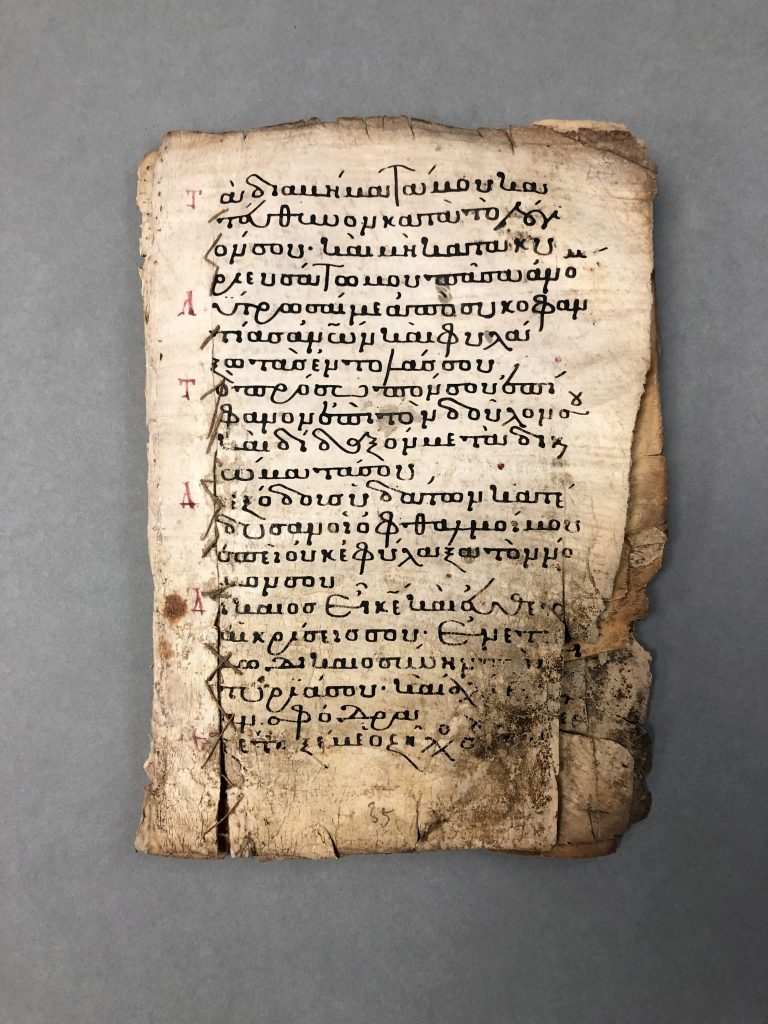
The first of the manuscripts is CUL MS Dd.4.39, an 11th century psalter including canticles and prayers. The manuscript is currently in a Northern European binding covered in brown reversed tanned skin. The manuscript consists of 364 parchment folios. Various elements of the original text are missing, though some have been replaced with folios from a later manuscript. No sewing structure remains, other than helical sewn spine-fold repairs. There is evidence of past sewing preparations; both V-shaped and pierced sewing holes can be seen along the spine-folds. The presence of two separate techniques suggests the book has been rebound several times. The parchment bookblock has suffered heavily from cockling, abrasion, tears and losses. Wax deposits can also be found throughout the book, most likely from a dripping candle.

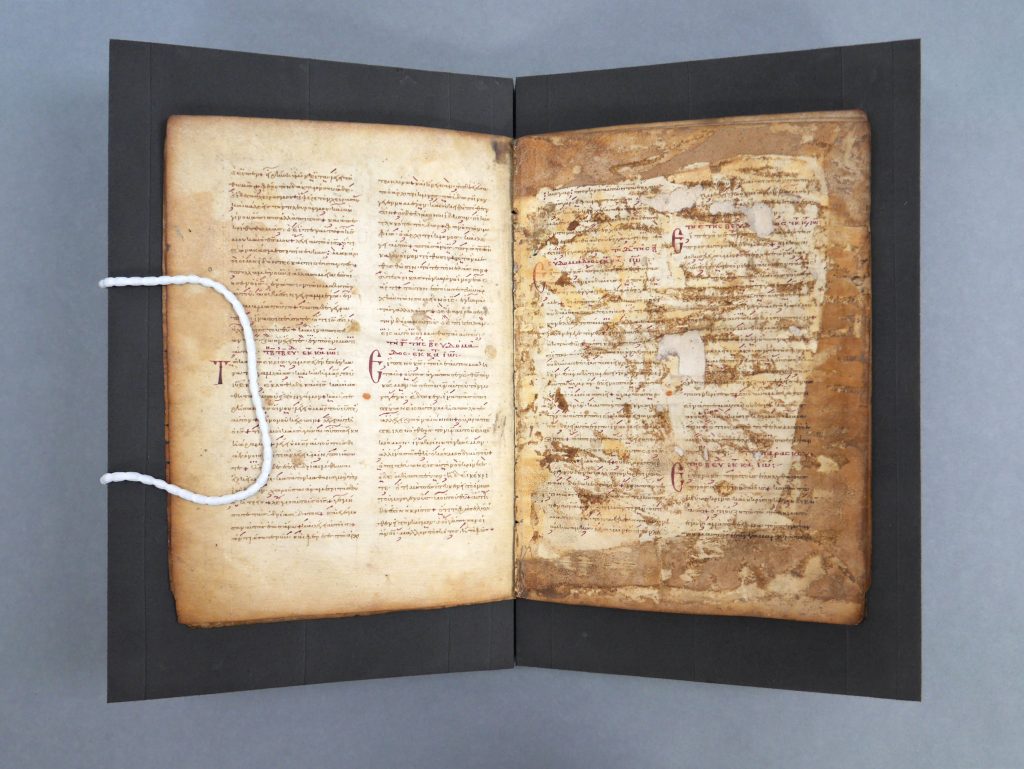
Second is CUL MS Add.1840, a 12th/13th century evangelion (gospel book), bound in a Northern European style binding in brown tanned skin. The manuscript consists of 112 parchment folios that are completely detached from the binding. No sewing structure remains, though both V-cut and sawn-in sewing preparations can be identified, revealing that this manuscript has been bound a number of times. The bookblock has suffered from abrasion, insect damage, tears, losses and splits along the spine-folds. The tanned skin cover has been repaired with patches of lighter leather over the boards.

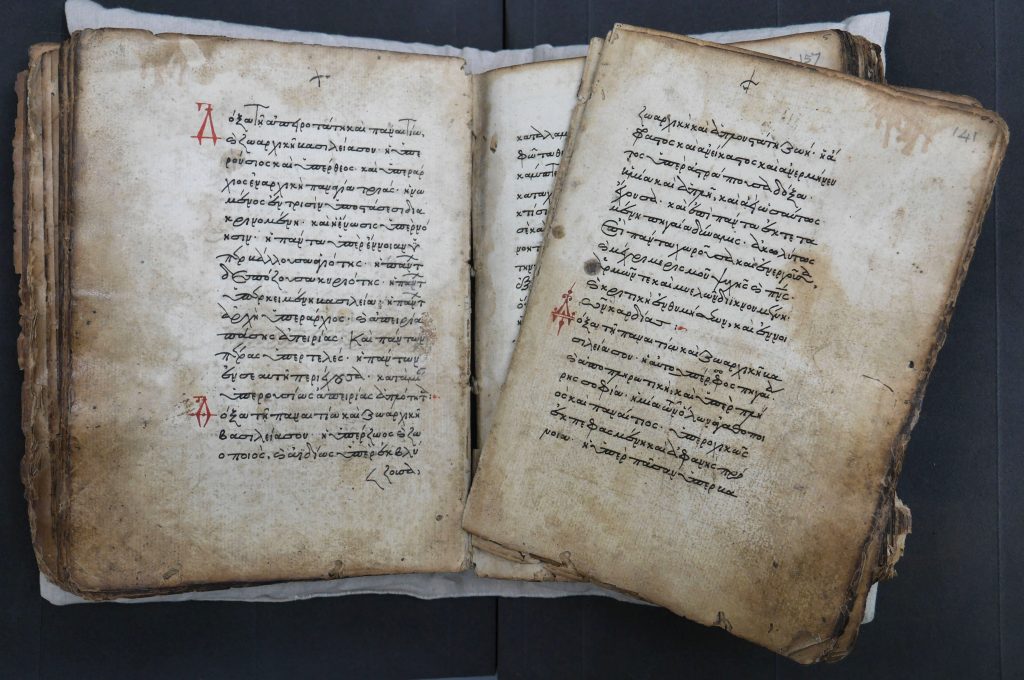
Last but not least is CUL MS Add.3048, a lay office book from the 17th century. The burnished laid paper bookblock is still bound in its original Eastern Mediterranean binding, however the sewing structure is broken in various places, leaving some gatherings detached. The wooden boards, the linen spine lining and the Greek-style endbands are now detached from the bookblock. The boards as well as the bookblock have suffered from water damage, cockling, tears, losses and extensive insect damage.

We will make these three manuscripts safe to handle for digitisation as a priority and make the books available to readers and researchers, allowing them to be safely accessed and handled. Treatments will be starting soon on these items, so please watch out for our future blogposts!
